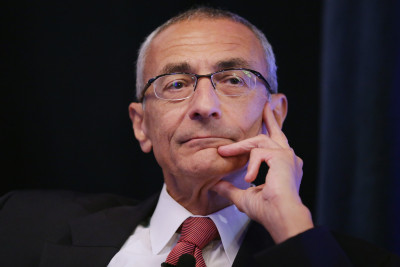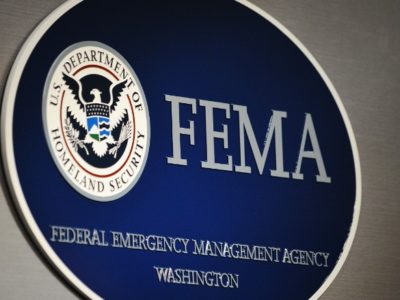A (Previously) Unsung Environmental Champion
John Podesta Is (Finally) Getting Some Credit: What Might It Mean for a President Hillary Clinton?

If you don’t read the High Country News, you should: it is a tremendously good independent source for environmental news, particularly news affecting the Intermountain West. And particularly given the collapse in a lot of good journalism, it is important to support it. HCM’s most recent issue, though, is less Wyoming and more Beltway.
It is a profile of John Podesta (pictured), who served as chief of staff both for Bill Clinton and Barack Obama, founded the Center for American Progress, and now heads Hillary Clinton’s campaign for President. Like all profiles, it’s something of a puff piece: unlike many profiles it actually has a good bit of substance and specifics to it:
As the 66-year-old Podesta embarks on yet another adventure — this time as Hillary Clinton’s campaign manager for the 2016 election — he can list some remarkable achievements: He directly had a hand in six of 16 national monuments Obama has created or expanded so far by executive order, including New Mexico’s Organ Mountains-Desert Peaks, Colorado’s Browns Canyon, Southern California’s San Gabriel Mountains, and the country’s largest marine reserve, the Pacific Remote Islands National Monument; and steered a landmark climate deal with China to control greenhouse gas, as well as the first proposal to regulate climate emissions from U.S. coal-fired power plants.
Add in his record under Bill Clinton — the sweeping 2001 “Roadless Rule” protecting 58 million acres administered by the U.S. Forest Service, and the 19 national monuments and conservation areas, many in the West, that Clinton declared in his second term in office — and Podesta can claim a green legacy that even Teddy Roosevelt would be proud of.
“Nobody in the 21st century in U.S. government has had the influence that he has had on public lands and climate change,” says Douglas Brinkley, a Rice University professor of history.
Podesta rarely gets public credit, but those who do — from the presidents he has served to Cabinet members and agency heads — are quick to acknowledge his contributions.
Says Bruce Babbitt, Clinton’s Interior secretary, “The hidden hand of John Podesta is involved in every environmental advancement accomplished in the Clinton and Obama administrations.”
Whether you think that this is good or bad, it is certainly significant. I particularly liked the fact that the piece, penned by Elizabeth Shogren (formerly of the Los Angeles Times) also included places where Podesta made mistakes, e.g. moving forward with the creation of the Escalante National Monument, which might have created more political problems than it preserved in land (your mileage may vary).
The interesting question is how this will all play out if Hillary Clinton is elected President. There is little doubt that Podesta is having a salutary impact on the Clinton campaign: unlike the incompetent and mendacious Mark Penn (see here for Alex Pareene’s classic article on the “Mark Penn Test“), Podesta has given discipline and policy chops to the effort.
So will Podesta go back to the White House if Clinton is elected? He will be 68 on Inauguration Day 2017: cue youtube videos of Danny Glover in Lethal Weapon noting that he is too old for this s*it. But in the exceedingly like event that the Republicans will maintain control of the House, his skills will be necessary. Democrats — and friends of the environment — will hope that, like Glover, he will saddle up once again.
Reader Comments
One Reply to “A (Previously) Unsung Environmental Champion”
Comments are closed.







Jonathan, we need many, many people to join together to speak out in our fight against the rapidly increasing destruction by global warming, including the refutation of far too many mendacious people who sway too many citizens to destroy their own future.
This is similar to WWII when Nazi’s who murdered millions of innocent people were enabled by using the most destructive propaganda in history to justify their hell on earth slaughter because moral and intellectual institutions failed to speak out to protect humanity. This is a history lesson we cannot afford to forget today.
It is time for our moral and intellectual institutions to join together to meet the challenges of global warming before we run out of time, especially now that we have passed 400 ppm atmospheric CO2.